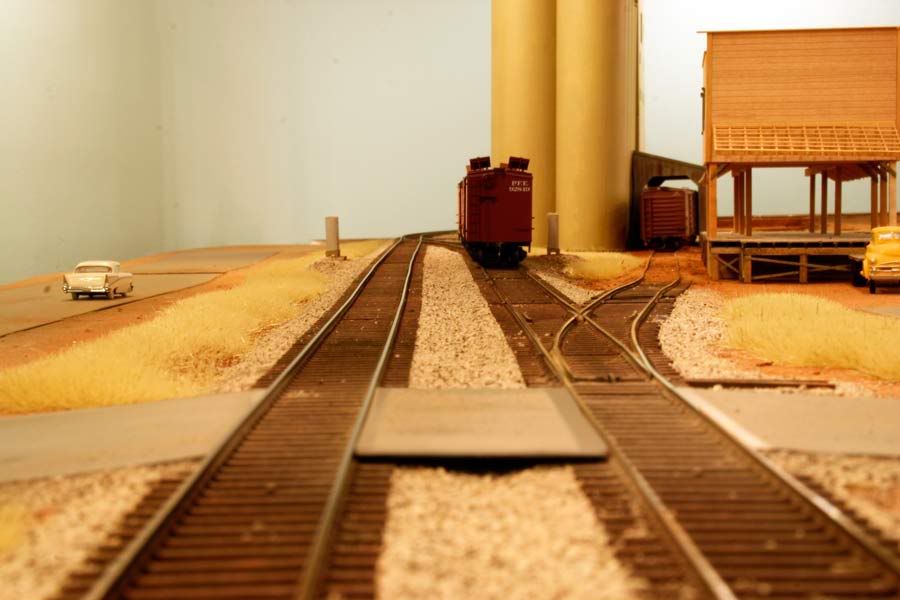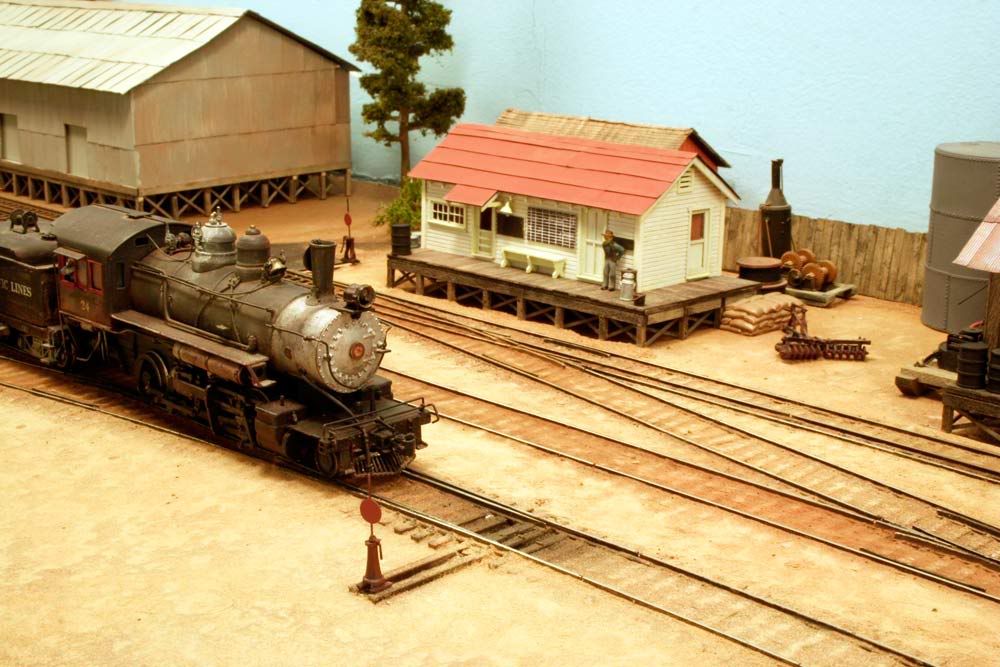I model the 50’s-60’s when ballast would not be as neatly done as with modern machinery. Do the best job you can and utilize techniques that have been mentioned but don’t apologize for a less than perfect job.
If that’s what photos of your prototype show, it may be something of an exception. Prior to the advent of modern track maintenance machinery ballast edges were often much more tidy in appearance. Steam era photos of major mainlines, and even important branches, frequently show careful grooming that went away quickly once machines did the work.
Jerry, I agree wholeheartedly about using a foam brush. No matter how careful I tried using a bristle brush, those stray grains would end up on top of the ties. And, because of the flat surfaces of a foam brush, tamping down the ballast at the sides of the track is a lot easier.
I like to ballast. I find it very relaxing and rewarding. During my first attempts I was apprehensive.[(-D]
While I don’t love ballasting, I don’t hate it either. I fall into the well groomed category I guess and do take quite a bit of time to complete the task. I ballast after scenery (without vegetation) is complete. Since I model in On30 ballast can be pretty optional or be even just dirt. My main line (pictured) is well groomed just because I wanted to do it that way. My long branch line will be less tidy using a combination of stone, dirt, sand etc. to represent the more rugged character of a logging/mining area. In any case, I feel ballasting and also track weathering is an important part of the modeling process and deserves attention to detail however it’s accomplished.
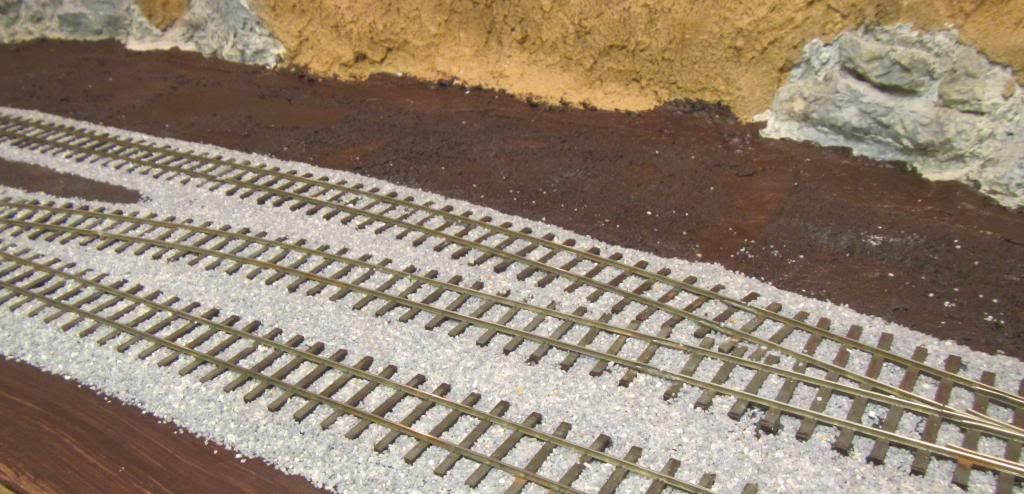
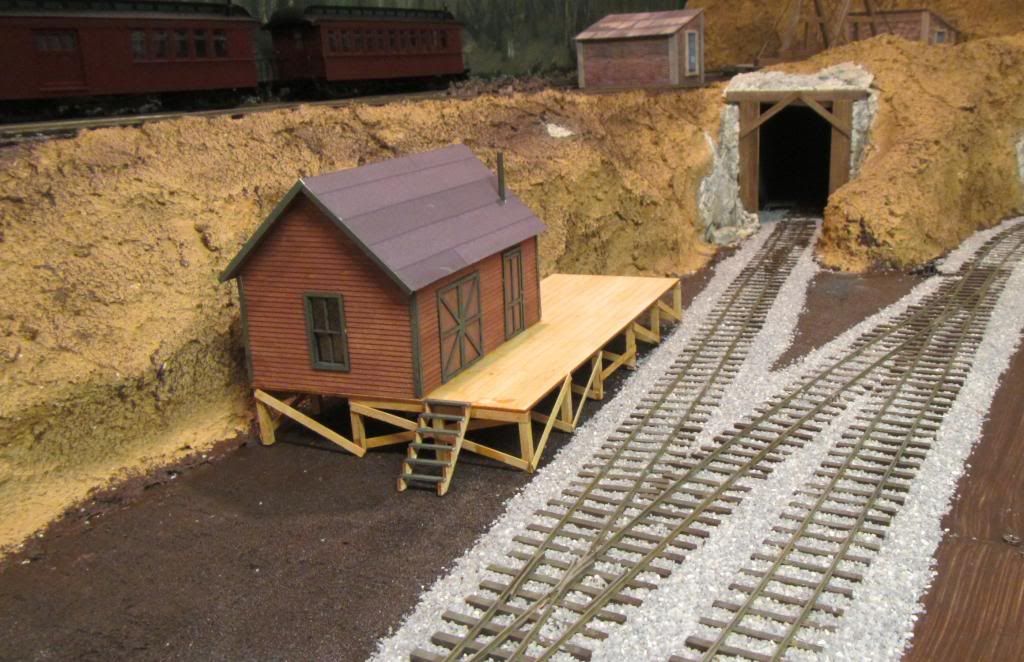
That’s the way it is also here in central Georgia. The NS mainline is very well groomed, but when you get into the spurs around industries not so. Some look like they haven’t had any fresh ballast for years and years but with the light traffic I suppose it’s not needed. You really just have to look around the area you’re modeling and see how the prototype does it, unless you’re modeling an era years ago and then photos are your only recourse.
I don’t hate ballasting it’s just not my favorite part of the hobby by a long shot.
Same here in the seattle Sub. NP2626, the main get’s lots of love. the only bit’s of rough trackage is the track that heads to the yard in Centralia, and the line out to Shelton. though recently there’s been lotsa class 1 action.
I’m in both camps:
Mainline, Class one RR - Neat and tidy - no stray ballast.
Run down shortline - Dirt ballast covering the ties
Both approaches require time and careful work to get good results.
Guy
I am with Guy! being a narrow gauger, the old narrow gauge lines never spent the long buck on tidy ballasting. Most all sidings and in town/yard situations were ties buried in dirt, like some of Guys pix.
I am tearing up what track I have on cork roadbed, doing away with it entirely and putting the track on the table with minimum balast on the main and all track will be buried in dirt where switching and yard work is done.
My road doesn’t even run passenger service save in a goose or combine caboose so there are no streamliners or crack limiteds drifting over the main, just a bunch of swayback flats and gons loaded with ore.
Richard
as for which camp am I in, whichever one has a campfire and some s’mores. [(-D]
By the time I’d laid all my track I had 325 feet of mainline, some of it double track plus yards and a branch line. I needed a quick way to ballast everything without breaking myself financially. I wanted a heavy duty 1950’s mainline, a lighter duty branch line and essentially level yards. The material I chose was medium grit sandblasting stone which sold for about $10.00 for a ninety lb. bag, more than enough for the whole job. I laid the mainlines in Code 100 on top of cork. I used sheets of luan plywood to bring the yards up to the same level as the cork. The branch line was laid on top of Instant Roadbed mastic which I regretted later because the stuff doesn’t like switches. N scale cork would have worked better! After spreading and shaping the stone, which was easy because it’s dense and heavy and retains the shape you give it better than orthodox MRR ballast, I soaked it with dilute white glue and it set up solid. Next step was to free up the switches. After that I over sprayed track and ballast with Rustoleum ruddy brown primer cleaning off the rail head before the stuff could fully cure. Once the ballast was firm I added sifted dirt and fine turf mixture next to the ballast for ground cover. The effect is like a mainline where the ballast has taken on the color of rust that’s leaching off the rails. It also seems to reduce the apparent size of Code 100 so it looks more like Code 83 and it blends in any ballast that might be laying on top of the ties. For variations in track coloring I used weathering chalks, black around engine servicing tracks and white to simulate ground up locomotive sand on my grades. Neatness is advisable because the prototype can get away with stuff that a modeler can not! One caution! Make sure all the ballast stone is firmly glued in place because it can play hob with your switches if it’s not. I present this as a "quick and dirty&
The photo below shows different track and it’s ballast on my layout. Main on the left, a more weedy unkept spur on the right. It gets even worse in some areas, but not much. I agree that if you’re going to do this make sure the ballast and weeds you leave on the ties is glued down good, and remove it completely from the tracks especially on the inner side.

I enjoy ballasting, here is a side spur on my layout. I just try to keep as much off the ties as possible. Every now and then I still have to poke some off
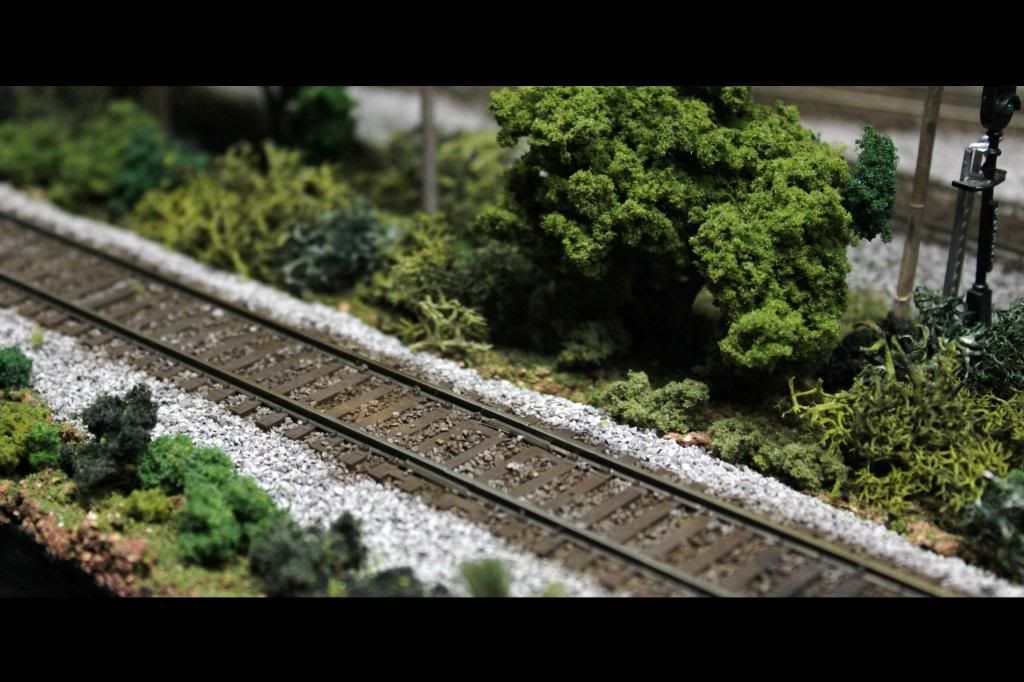
Jeremy, that is an interesting look. Is that a different colored ballast under the ties or is it painted?
Rich
What materials are you using for weeds? They look very good. Thx.
I ballast my layout a few feet at a time. Not my favorite project but just part of building a layout,
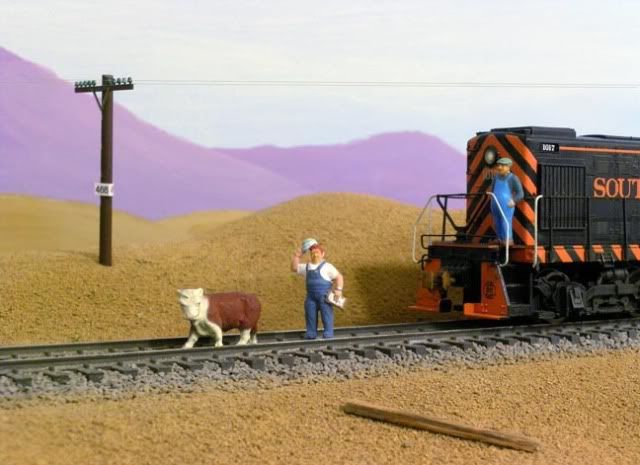
Of all the MR disciplines I hate ballasting the most and for all the reasons posted… But I tend to be a “perfectionist” only because the results make the layout standout. Ballasting to me makes or breaks a layout.
Rich:
I have weathered the ballast around the ties, as in this pic ( not my pic )
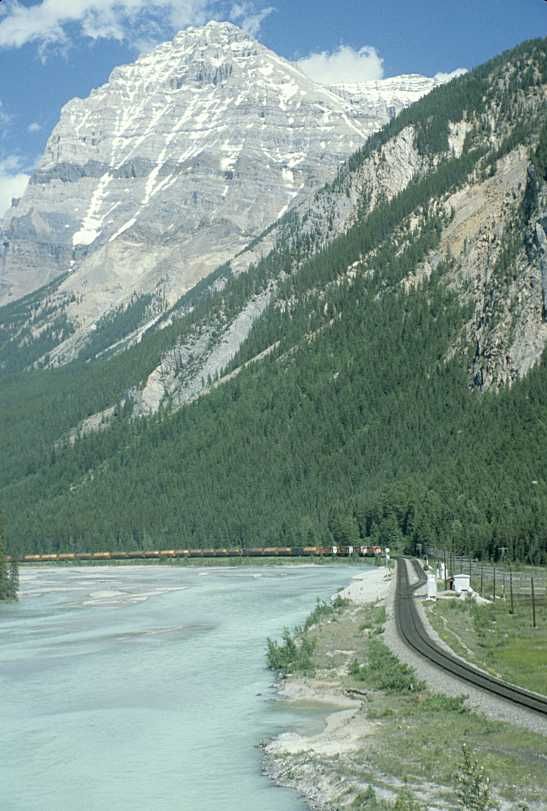
I ballast fairly heavily, since it’s a mainline mountain route and subject to intense weather changes. The ballast is from a large gravel pit on the Yuba River, and is good old Sierra Nevada granite. Running from left to right is the ‘house’ track for Wagon Wheel Gap, the mainline (double guard rail extended from sheer cliff running outside the bottom of the picture frame) and overgrown siding at the cattle pen–mostly dirt. It’s not pretty or manicured, it’s just heavy, lol.
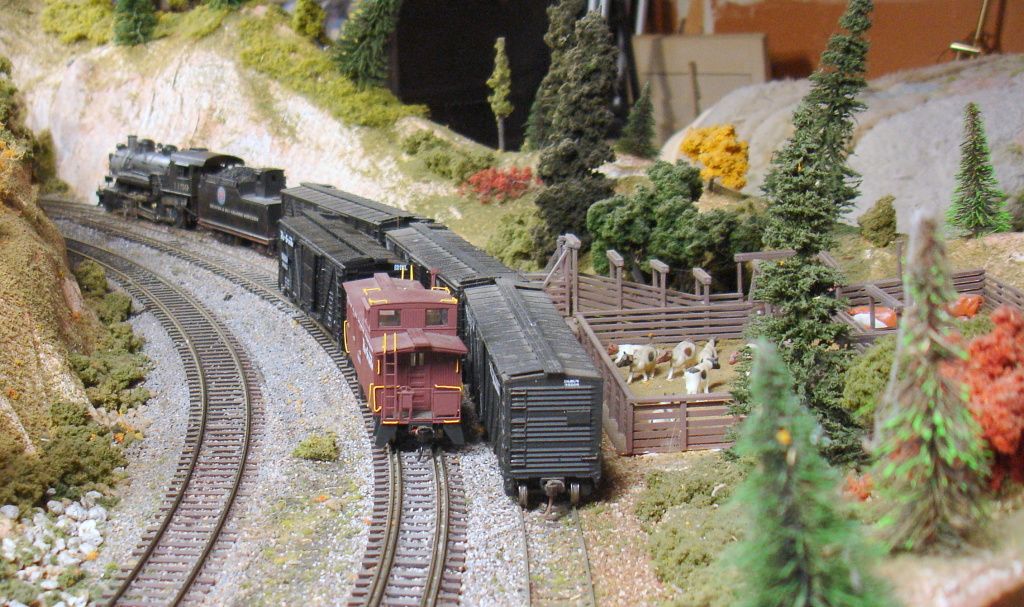
Tom
Jeremy,
I really like the look of your ballasting efforts. Nice work.
Rich
